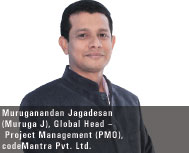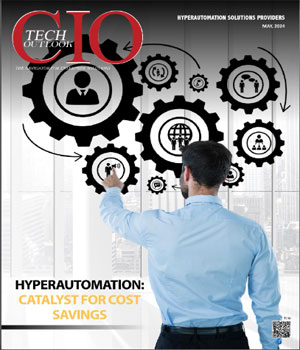
CIOTechOutlook >> Magazine >> September - 2016 issue
Strike a New Balance between Process Efficiency and Process Agility
By
 Every business needs to examine itself for how it should change, so that it can anticipate and be prepared for the transformations happening in the global markets and economy.
Every business needs to examine itself for how it should change, so that it can anticipate and be prepared for the transformations happening in the global markets and economy. Business processes are based on how the business workflow is organized. The impact and result of the workflow implementations are measured from the outcome of operating performance and improvements that they produce; the workflow should make business sense from the viewpoint of financial return and costs.
Here is a clear definition of business process management: “Business Process Management (BPM) is a discipline involving any combination of modelling, automation, execution, control, measurement and optimization of business activity flows, in support of enterprise goals, spanning systems, employees, customers and partners within and beyond the enterprise
boundaries.” – bpm.com
BPM should strike a new balance between process efficiency and process agility.
BPM considers process as both a business imperative and a means of understanding and explaining business activities - the way customer requirements get transformed into actual goods and services.
Every business is looking for opportunities to automate business processes. This encompasses the development of executable process management technology as well as tools for modelling and designing processes. Third-party IT vendors, in particular, recognize this and build BPM systems (BPMS), and use BPM as a vehicle to develop and promote their products.
BPMS are a new family of platform that automate and simplify the task of managing business processes over the entire lifecycle. In a BPMS, the process management system specializes in orchestrating every business process, and calls on other applications for services, as required.
Moving to a new “Process Platform” is always a challenge because of its far-reaching implications for the ability of enterprises to adapt; it is much more than a technology fad and is a management issue that needs to be on senior management's agenda, driving the IT support of the business.
Business leaders believe that managing an enterprise requires managing its processes – some argue that an enterprise is nothing more than the sum of its processes. The current era has seen Business Process Reengineering (BPR), Business Process Outsourcing, Digitization, Enterprise Resource Planning (ERP), and Six Sigma.
Let us briefly talk about the themes of BPM: Process Strategy, Process Architecture, Process Ownership, Process Measurement, and Process Improvement.
Process strategy addresses the linkages between the articulation of strategic intent and the intended actions in the deployment and ongoing management of a process infrastructure.
The objective of process strategy should be towards cost reduction, increased delivery reliability, speed of new product introduction, increased flexibility and consistent product or service quality.
Process architecture includes both technical and non-technical resources responsible for the transformation of input to output, and the identification of control structures which constrain these transformations.
The framework should emphasize integration at a process level – both the intra- and inter-connectedness of ‘manage’, ‘operate’, and ‘support’ processes. The purpose of the architecture is to provide a top-level hierarchical model which integrates the flows within the business. This provides a co-ordinating mechanism for improvement and change. To successfully implement BPM, the systems should follow documented procedures, have consistency, and involve review and update of the process architecture.
Process ownership is the key element of BPM. The process owners defined in the organization structure should meet the responsibility-accountability requirements along with the teams. To avoid cross-functional team conflicts and success of the implementation, the process teams should be motivated by reward and
recognition structures.
The process owner has to ensure that the people performing the process understand it, and trained enough to raise red flags on non-value-adding activities.
CXO Insights
Deep Analysis Of The Gamification Phenomenon
By Leenesh Singh, Head of Human Capital Management, SmartConnect Technologies
Reducing Operational Costs and Enhancing Data...
By Janifha Evangeline
Multiplying Opportunities In Big Data Analytics



